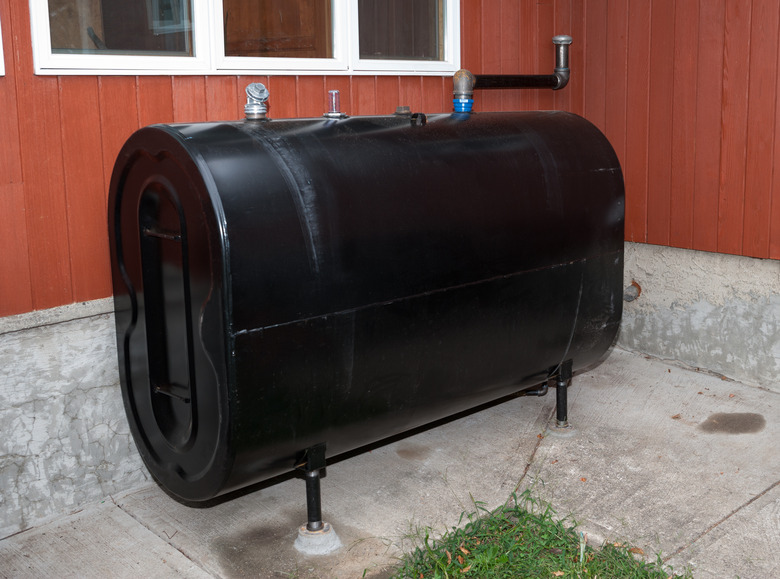Home Heating Oil Tank Sizes
We may receive a commission on purchases made from links.
When you're new to a home that's heated with oil or it's time to replace your existing oil tank, knowing the tank's size is important. Its capacity determines how often you need to refill it. Using a tank that's too small for your needs may mean running short of heating oil during a cold winter.
Common Heating Oil Tank Sizes
Common Heating Oil Tank Sizes
Heating oil tanks are sized by capacity. The bigger the building, the bigger a heating oil tank it generally needs. The standard size for a home heating oil tank is 275 gallons, but tanks are also commonly sold in sizes of 288, 330, 420, 500, 550, 675, and 1,000 gallons.
There's no need to guess the size of your current heating oil tank; you should see a nameplate or label stating its capacity. If not, measuring the dimensions of the tank will help you identify its capacity. Keep in mind that an oil tank is never filled completely. Leaving room at the top of the tank allows space for the oil to expand in warm conditions. A 275-gallon tank may be filled with a maximum of 250 gallons of oil, while a 330-gallon tank may be filled with 300 gallons.
Dimensions of Heating Oil Tanks
Dimensions of Heating Oil Tanks
Heating oil tanks are generally shaped like a capsule or cylinder. Capsule-shaped tanks can be installed vertically or horizontally. A typical 275-gallon tank is 60 inches wide, 44 inches high, and 27 inches deep. A common model of 330-gallon tank also measures 44 by 27 inches and is 72 inches wide.
If you're still not sure what size tank you have, the company that delivers your oil probably knows. (Ask them about scheduling a tank cleaning while you're at it; it's an important maintenance task that's often overlooked.)
What Size Do I Need?
What Size Do I Need?
The size of your home is one indicator of how big an oil tank you need. A 275-gallon heating oil tank is generally appropriate for a one- or two-bedroom home. A larger home with more than three bedrooms may be better served by a 330-gallon tank or even a 500-gallon tank if space allows.
Your individual preferences matter too. If you tend to keep your home really warm in winter, your home may consume oil twice as fast as one of a similar size. Having a larger tank requires less frequent oil deliveries and may be preferable in places that are prone to major storms. If there's a massive blizzard late in the winter when your oil tank is nearing empty, you might wish you had installed a larger tank so you could keep some surplus oil on hand.
Monitoring the oil level inside your tank helps you calculate your consumption rate so you don't run out of oil unexpectedly. Make sure you know how to read your tank gauge, or you can use an oil tank stick to check the level manually if your tank doesn't have a gauge. You can make monitoring your tank even easier by investing in a digital monitor. A smart oil tank gauge connects to your devices over Wi-Fi so you can check your tank's status from anywhere.
